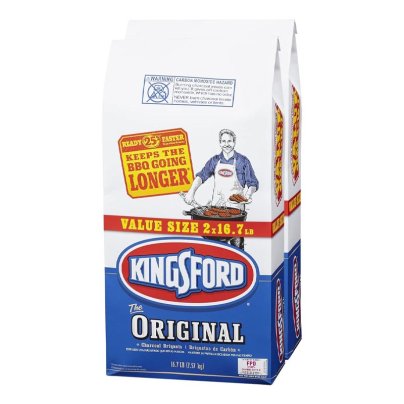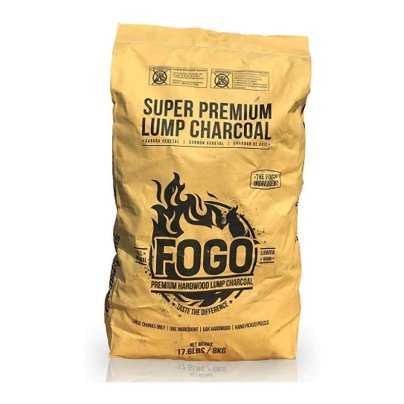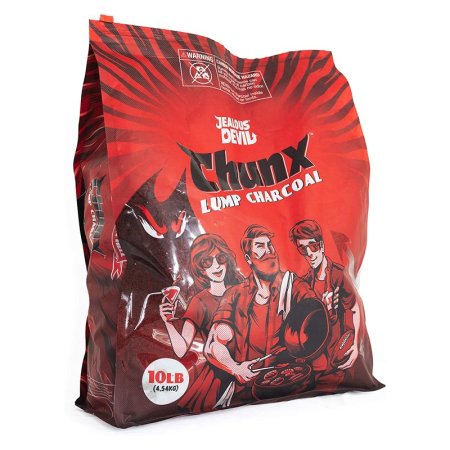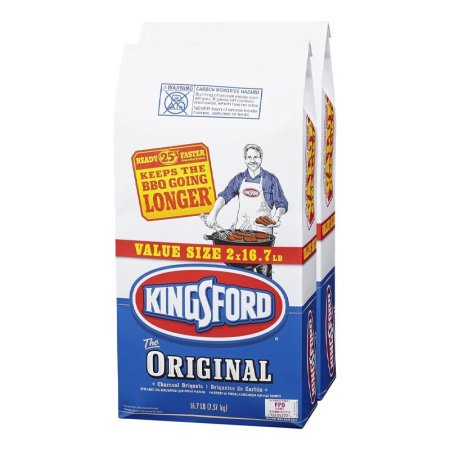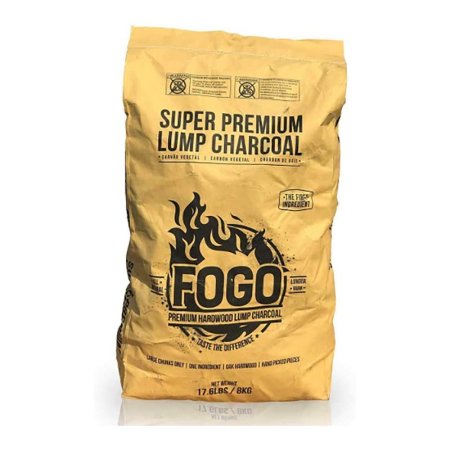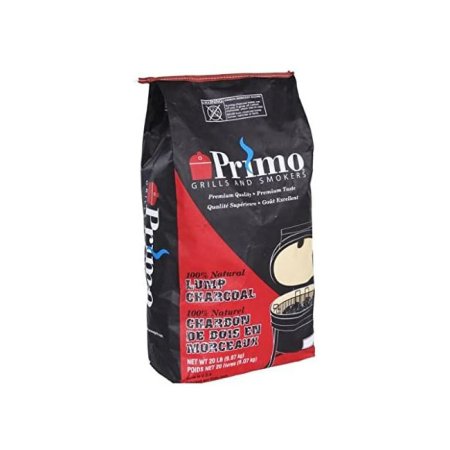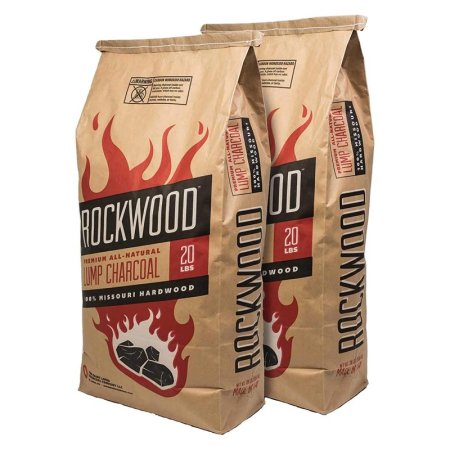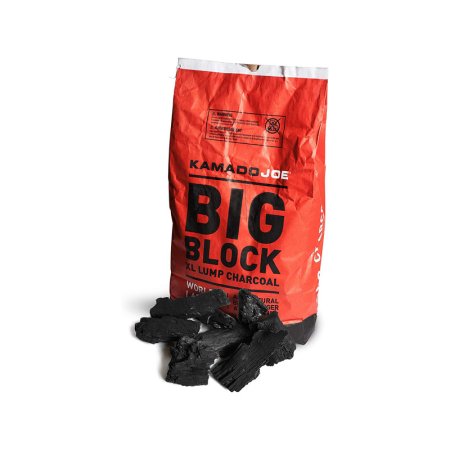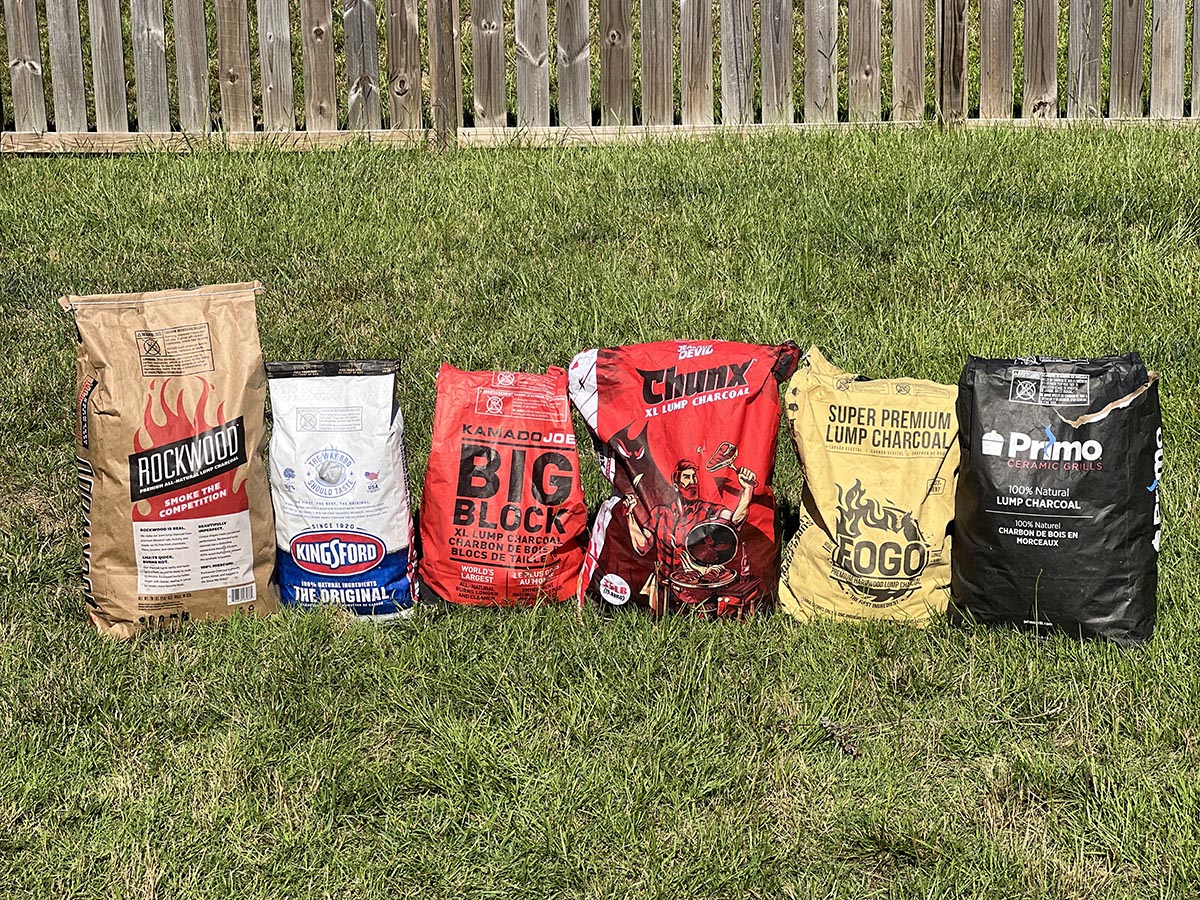
We may earn revenue from the products available on this page and participate in affiliate programs. Learn More ›
Cooks around the world use charcoal as an alternative to propane or natural gas to grill food over an open flame. This style of grilling tends to give the food a uniquely smoky flavor that delights the palate. The taste is achieved through a combination of the food being prepared, the grill itself, and the selected charcoal product. Those new to the pleasures of grilling may not know what to look for when buying charcoal, and even avid backyard cooks attached to a favorite brand may be willing to try a better product. With that in mind, we decided to put some of today’s most popular charcoal products through rigorous (and tasty!) testing to determine which ones truly rule. Ahead, learn about the types of charcoal available, what factors to consider when shopping, and why the products listed below took top honors as our picks for the best charcoal on the market.
- BEST OVERALL: Jealous Devil Chunx Lump Charcoal
- BEST BANG FOR THE BUCK: Kingsford Original Charcoal
- UPGRADE PICK: Fogo Super Premium Lump Charcoal
- BEST ALL-NATURAL: Primo 100% Natural Lump Charcoal
- BEST LUMP: Rockwood Premium All-Natural Lump Charcoal
- BEST FOR CERAMIC GRILLS: Kamado Joe Big Block XL Lump Charcoal
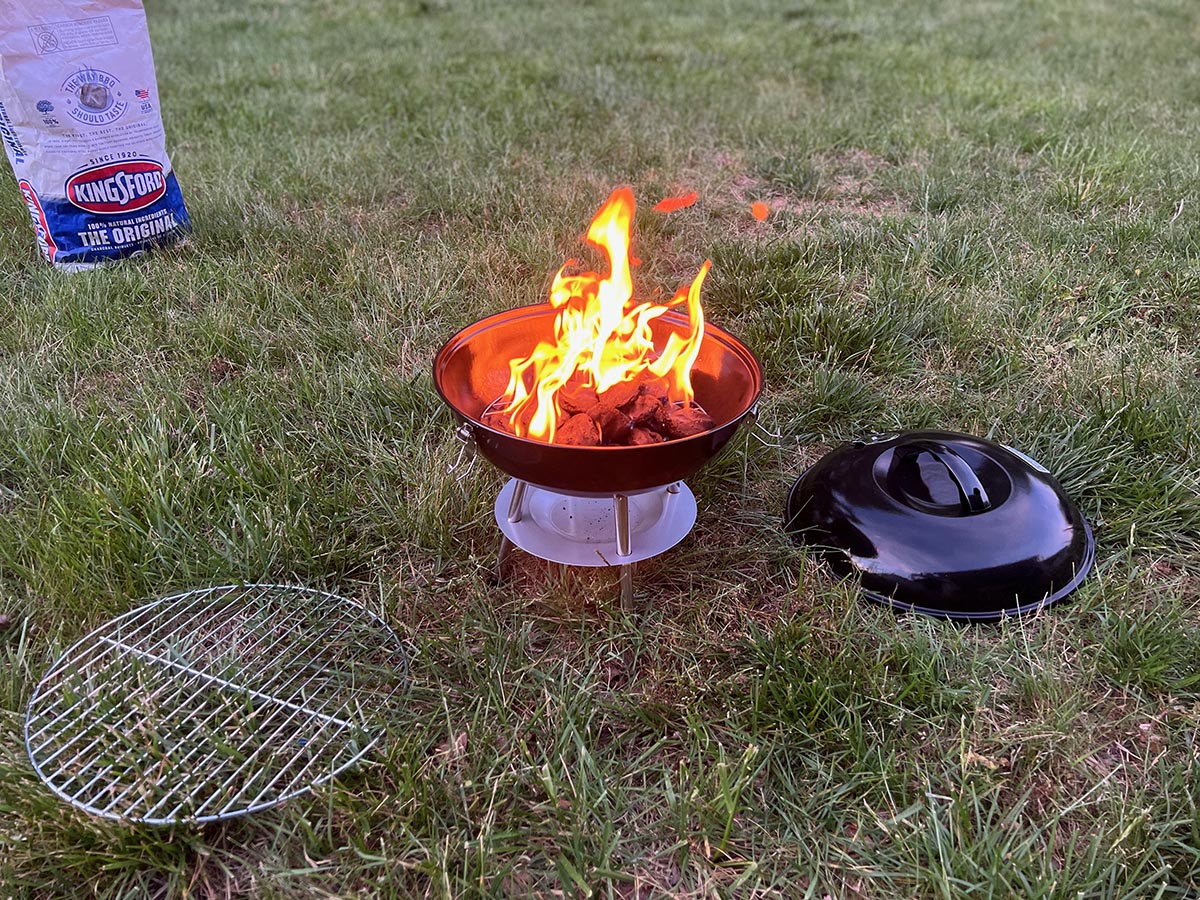
Types of Charcoal
Charcoal comes in different forms, including briquettes, instant charcoal briquettes, hardwood lump charcoal, flavored briquettes, binchotan, and Thai charcoal.
Charcoal Briquettes
Charcoal briquettes—one of the two main charcoal types that Americans use regularly—have a uniform size and shape because of the manufacturing process. Made from such materials as wood scraps, sawdust, coal dust, borax, and petroleum binders, briquettes produce an acrid smoke when lit, and some folks eschew it because of associated health risks, opting instead for the pure carbon of hardwood lump charcoal. However, briquettes cost less and burn longer and more evenly than lump charcoal.
Instant Charcoal Briquettes
Instant charcoal briquettes are essentially standard briquettes that have been saturated in lighter fluid or other petroleum-based accelerants that make them much easier to light. The accelerant is supposed to burn off quickly, but unfortunately it can give food an unpleasant, oily taste if briquettes are not fully lit when grilling begins.
Hardwood Lump Charcoal
The second of the two main types of charcoal, hardwood lump charcoal, burns hotter than charcoal briquettes but cannot burn as long and tends to cost more. These differences are all a result of the manufacturing process: Wood is burned with very little oxygen until all moisture and gasses are gone, leaving pure carbon that’s very similar to the original wood in appearance. Free of binders and petroleum-based accelerants, hardwood lump charcoal is a healthier option than charcoal briquettes and a favorite of grill cooks aiming for a smoky grilled taste.
Flavored Briquettes
Flavored briquettes are standard briquettes treated to lend a distinct taste to the grilled food. They commonly come in mesquite, hickory, and applewood flavors. Most grill experts prefer adding flavored wood chips to regular charcoal instead to impart a stronger, more authentic flavor.
Binchotan
Binchotan is a type of lump charcoal that originated in Japan, though it’s now popular across the United States. Traditionally produced using ubamegashi oak, it burns very clean, very hot, and for a long time, making it an excellent option for grilling. All these great features come at a price much higher than that of other types of charcoal, with a single piece of binchotan costing several dollars. This is because most binchotan imported to the United States comes from endangered mangroves in Malaysia.
Thai Charcoal
Thai charcoal is a relatively recent addition to the grilling world and so may be a bit hard to find. Created by celebrity chef Andy Ricker, it uses sustainable orchard-grown rambutan fruitwood. The result is lump charcoal similar to the binchotan in heat and burn time at a fraction of the cost. However, it can be a bit difficult to light.
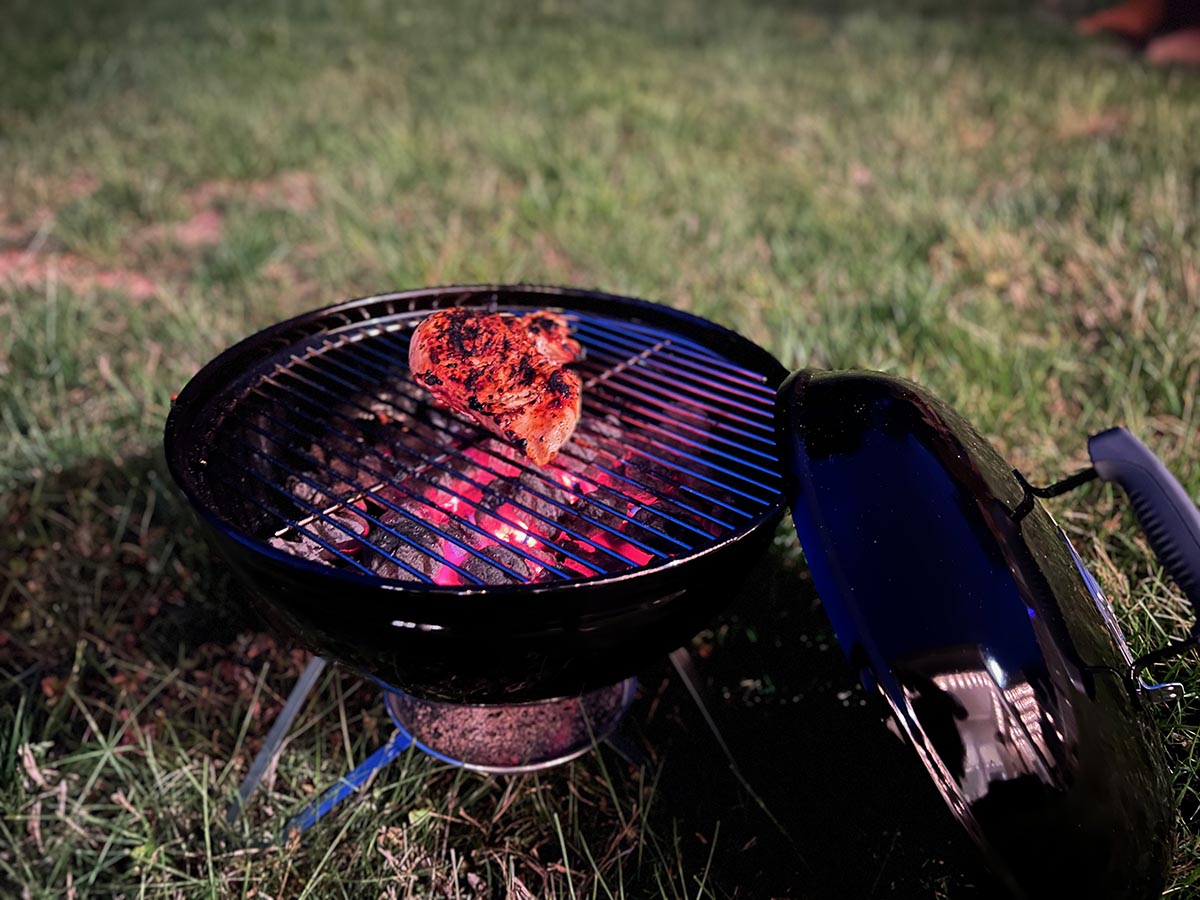
Features to Look for in the Best Charcoal
Before choosing charcoal for outdoor grilling, take a few minutes to educate yourself on the most important shopping considerations to keep in mind.
All-Natural/100 Percent Hardwood
All-natural and 100 percent hardwood are two labels that appear frequently on charcoal packaging to advertise clean-burning products.
- All-natural: Most people think that all-natural means that products are safe, health conscious, and environmentally friendly, but the “all-natural” label may be less beneficial than some consumers believe. All-natural merely means that no synthetic (man-made) ingredients were used in creating the charcoal product. However, lump charcoal and charcoal briquettes typically have no synthetic material, since common ingredients such as carbon, wood, coal, and possibly starch and borax all occur naturally.
- 100 percent hardwood: This label frequently appears on lump charcoal products and on higher-quality charcoal briquettes. However, buyers should not mistake this to mean the product is 100 percent charcoal. This claim states that the charcoal product wasn’t produced using sawdust, wooden pallets, or other scrap wood or mixed with anthracite coal.
Burn Time
Burn time determines how long you can grill before needing to add more charcoal. Longer burn times are crucial for smoking foods, which might need 12 hours or more. Charcoal that has a longer burn time can also be reused for more than one grilling effort. Burn times depend on the type of charcoal in use.
- Charcoal briquettes burn at an even pace and usually outlast lump charcoal products. The use of petroleum-based binders in charcoal briquettes gives them the ability to burn at a consistent temperature over a long period.
- Lump charcoal burns at a quick pace. It climbs rapidly to a higher maximum temperature than charcoal briquettes before burning out.
Despite these basic categorizations, each charcoal manufacturer will indicate an approximate burn time for its respective products and a suggested method of use to obtain this burn time. Keep in mind that every grill burns differently too, so while a company can advertise an average burn time based on controlled tests, any individual user might not experience the same results.
Burn Temperature
Grilling requires heat—and lots of it. The burn temperature is another factor that differentiates charcoal briquettes from lump charcoal. To grill a steak or burger properly, the grill surface must reach a high enough temperature to sear a good crust on the outer layer of the meat, locking in juices. On the other end of the spectrum, foods such as chicken may require lower temperatures and sometimes indirect heat in order to ensure that the meat cooks through without drying out.
Charcoal briquettes burn at an average temperature of 800 to 1,000 degrees Fahrenheit. The heat charcoal briquettes produce is even and lasts longer than lump charcoal for better control of the grill’s temperature. For those new to charcoal grilling, briquettes are great for building experience. Briquettes are less likely to burn—and ruin—food.
Lump charcoal can reach temperatures of 1,400 degrees Fahrenheit, but this type of charcoal benefits from an experienced hand. It can be difficult for newbies to manage the quickly climbing and rapidly declining temperatures that lump charcoal produces.
Minimal Fillers
Fillers are additives that manufacturers mix with carbon to form a thick paste, which is then fed into rolling molds to create charcoal briquettes. These fillers typically include sawdust, wood chips, coal, borax, limestone, sodium nitrate, and/or starch, each performing a variety of functions to bind the product together and help it burn. Products that use a lot of fillers produce a lot more ash than lump charcoal and also can have negative effects on food, such as poor flavor or the possibility of hazardous byproducts.
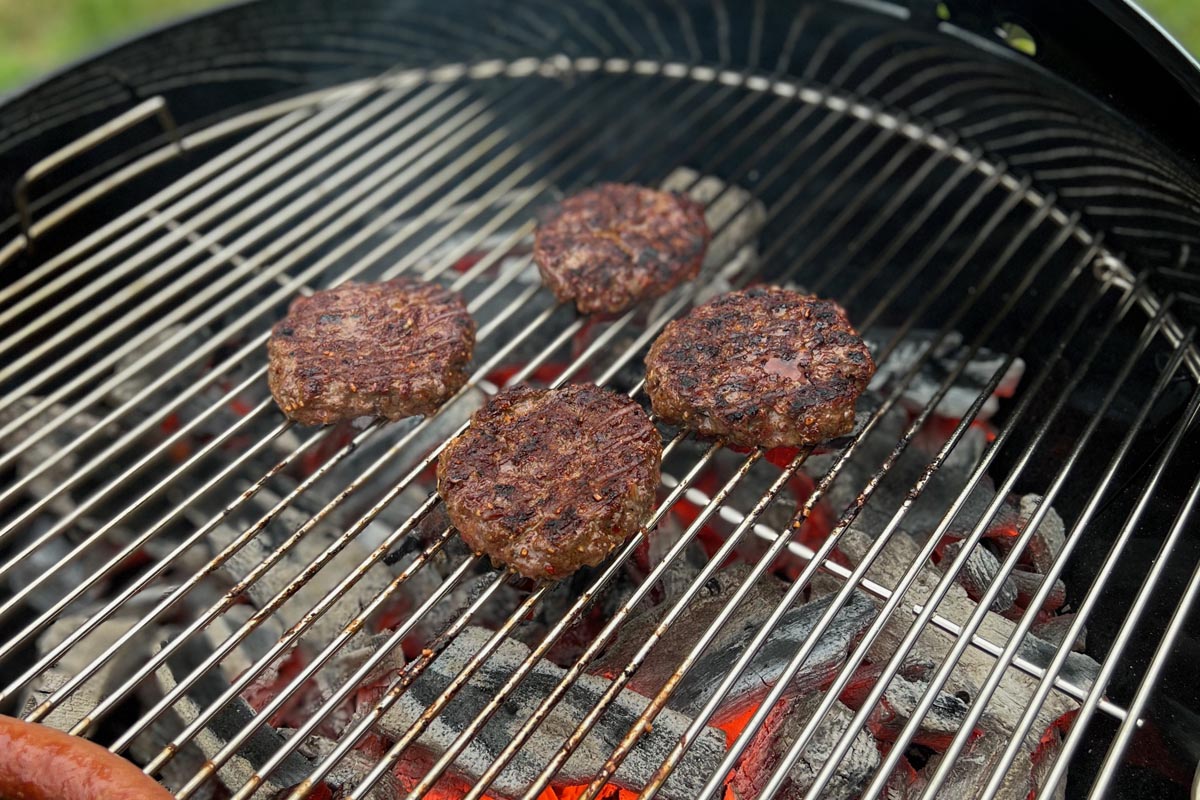
Tips for Buying and Using Charcoal
As a general rule, briquettes are easier for newbies to control, and hardwood lump charcoal takes some experience to manage properly. Keep the following in mind when choosing and using charcoal products:
- To avoid potentially hazardous byproducts in food, avoid cheap, self-lighting charcoal products. Although inexpensive, self-lighting products are the most likely to expose users to hazardous byproducts like carbon monoxide.
- Ideally, a bag of lump charcoal will contain a mix of large, small, and medium-size pieces, which enables good airflow while lighting the grill.
- The uniform shape of briquettes makes stacking the fuel in the grill easier, However, inferior products contain a lot of fillers that create a preponderance of ash, choking the flame on a grill.
- Charcoal products with thin edges make for more simple lighting.
Our Top Picks
Just in time for grilling season, we tested the following charcoal products—and all proved worthy in their various categories. See how they stack up so you can select the best products for your experience level, taste preferences, and budget.
Best Overall
Jealous Devil Chunx Lump Charcoal
Pros
- Very little dust and chips
- Good assortment of piece sizes
- Burns very hot and long
- Produces minimal ash
Cons
- Expensive
- Strong flavor profile may not appeal to some
Product Specs
- Weight: 10 pounds
- Wood: South American quebracho blanco
- Max temp: 1,150 degrees Fahrenheit
This premium charcoal product uses quebracho blanco, a South American wood known as the axe breaker—which explains why it’s so good for grilling. As one of the densest hardwoods in the world, quebracho blanco has the ability to reach extreme heat and maintain extended burn times.
On initial examination, we found most of the bag to contain medium-size chunks with a nice mix of large and smaller pieces and very little waste in the form of dust and chips. This mix of different sizes allows for good airflow, which makes lighting Jealous Devil easy.
After giving the charcoal about 20 minutes to heat up, we learned that a little Jealous Devil goes a long way. The dense wood takes more time to get going, but once it does, it burns hot and long. The dense wood coupled with great airflow allowed us to register temperatures exceeding 1,100 degrees Fahrenheit on a heat thermometer, the hottest of any charcoal we tested.
In terms of flavor profile, we found Jealous Devil to have a more intense smoky aroma than American hardwoods. This resulted in stronger flavors than other lump charcoal we tried. We loved it, but those who like more subtle flavors may prefer hickory or oak.
This high-quality hardwood lump charcoal burned quite efficiently, leaving very little ash behind, which made cleanup a relative breeze. There were also plenty of large pieces left that could be recycled for another burn. While Jealous Devil is expensive to purchase, its long burn time may just make up for the higher price.
Get Jealous Devil lump charcoal at Amazon, The Home Depot (35 pounds), or Tractor Supply Co. (35 pounds).
Best Bang for the Buck
Kingsford Original Charcoal
Pros
- Uniform size for easy loading and arranging
- Lights quickly
- No chips or tiny pieces
- Affordable
Cons
- Less flavorful than hardwood
- Produces more ash
Product Specs
- Weight: 16 pounds
- Wood: Sawdust, coal, starch
- Max temp: 810 degrees Fahrenheit
Kingsford Charcoal doesn’t offer the long burn times and more complex flavor profiles of lump hardwood charcoal, but it’s more user-friendly and will bring out smoky charcoal taste. In our tests, the uniform briquette size made it easy to achieve an even layer of charcoal in our cooker and create multiple heat zones. The smaller briquettes were also a better fit for our portable grills, which couldn’t always accommodate larger chunks of natural hardwood charcoal. Uniform size also meant we didn’t worry about losing pieces through the grill grates on our kettle grill. Our test bag contained no chips or fragments and just a minimal amount of dust.
There are some definite trade-offs, however. While the briquettes, which contain mainly sawdust, starch, and coal, infused smoky flavor into our food, they couldn’t deliver the complex flavors achieved with lump hardwood charcoal. Briquettes also don’t get as hot as hardwood—we recorded a max temperature of just over 800 degrees Fahrenheit for these Kingsford briquettes. While that might be hot enough for many foods (it’s certainly hotter than any gas grill), serious grill masters who want extreme heat for steaks would prefer lump hardwood charcoal.
The Kingsford charcoal briquettes didn’t last nearly as long as lump charcoal when cooking and produced significantly more ash, which resulted in a longer, messier cleanup effort. But they make a decent and affordable way for grilling newbies to get good results.
Get Kingsford Original charcoal on Amazon or at The Home Depot.
Upgrade Pick
Fogo Super Premium Lump Charcoal
Pros
- High maximum temperature
- Broad range of chunk sizes
- Very little chips or dust
Cons
- Expensive
Product Specs
- Weight: 17.6 pounds
- Wood: Central American Inga wood
- Max temp: 1,010 degrees Fahrenheit
Fogo is one of the pricier hardwood charcoals on the market, so we had high expectations. Fortunately, we weren’t disappointed. The 35-pound bag we ordered contained a nice distribution of sizes with very little dust or unusable fragments. The vast majority of the bag had medium- to large-size pieces, which speaks to the quality of this product. The larger chunks allowed for plenty of air pockets between each piece, which made lighting much easier. These larger pieces also produced a cleaner burn with very little popping.
Once up and running, Fogo produced high heat of over 1,000 degrees Fahrenheit, making it one of the hotter charcoal products we tested. Fogo has a long burn time and produces a less than average amount of ash when compared to other lump charcoal.
Fogo comes from Inga trees in El Salvador, where it is also manufactured. While Central and South American hardwoods generally have more intense flavors than their North American counterparts, this was not the case with Fogo, which produced milder smoky flavor in our test foods. So those who like a milder smokiness shouldn’t forgo Fogo.
Get Fogo Super Premium lump charcoal on Amazon or at The Home Depot (35 pounds).
Best All-Natural
Primo 100% Natural Lump Charcoal
Pros
- Burns long
- Produces little ash
- Few chips and dust
Cons
- Higher concentration of smaller pieces
Product Specs
- Weight: 20 pounds
- Wood: North American hardwood
- Max temp: 920 degrees Fahrenheit
Primo, which is known for its line of ceramic grills, also produces some of the longest-lasting charcoal on the market. Needless to say, we were excited to see just how well Primo lived up to its reputation.
Upon dumping out our test bag, we found that Primo has a noticeably higher concentration of smaller pieces than larger ones, which was a bit of a disappointment—large- and medium-size chunks would have been preferable. We also found some clumps of bark in the mix, but there was very little in the way of unusable chips and dust.
Despite having mainly smaller pieces, Primo lit easily and produced only minimal sparking and popping as the fire was building. Once the charcoal was fully lit, we found that it reached high temperatures of over 900 degrees Fahrenheit, putting it squarely among other lump charcoal in terms of heat output.
Primo advertises a very long burn time, and it lives up to that billing. Even after an extended period, Primo was still burning strong. Plus, once extinguished, much of Primo’s charcoal was preserved enough to save for the next grilling effort. This long burn time more than makes up for Primo’s steeper cost.
Given its efficient burn, we weren’t surprised to find that Primo produces very little ash. In terms of flavor, this North American hardwood produces a classic smoke that results in a milder flavor than the Central and South American hardwood charcoal we tested.
Get the Primo natural lump charcoal on Amazon.
Best Lump
Rockwood Premium All-Natural Lump Charcoal
Pros
- Great flavor profile
- No filler
- Burns long
Cons
- A bit hard to light
- Some bits that are too small to use
Product Specs
- Weight: 40 pounds
- Wood: Oak, hickory, maple, pecan blend
- Max temp: 925 degrees Fahrenheit
Rockwood Premium All-Natural Lump Charcoal is made with renewable, natural resources by taking hardwood leftovers from timber milling. While that’s admirable, we weren’t sure how that would translate into quality. Fortunately, for the most part, Rockwood didn’t let us down.
Out of the bag, it had a nice mix of charcoal pieces—about half medium-size pieces with an equal mix of large and small chunks. Yet Rockwood did not excel with lighting, which was somewhat disappointing. It took nearly 30 minutes to heat up once lit and exhibited some light popping. However, once it got going, this charcoal burned for a long time and produced very little ash.
Rockwood is well suited for low-and-slow cooking or could easily be recycled several times for standard grilling. It reached temperatures above 900 degrees, placing it among the other lump charcoal we tested. Rockwood gets its wood from lumber mills, which means it covers a broad spectrum of harwoods, including pecan, oak, and hickory, among others. This translated into a milder smoky flavor than typically comes from Central and South American hardwoods.
Get the Rockwood Premium lump charcoal on Amazon or at Ace Hardware (20 pounds).
Best for Ceramic Grills
Kamado Joe Big Block XL Lump Charcoal
Pros
- Predominantly medium-size chunks
- Burns hot
- Virtually no chips and dust
Cons
- Produces higher than average amount of ash
Product Specs
- Weight: 20 pounds
- Wood: Guayacan, guayaibi, mistral, and quebracho blanco blend
- Max temp: 1,000 degrees Fahrenheit
The acorn-shaped ceramic grill offers more versatility than a standard kettle grill. These Japanese-style grills are capable of grilling at high temperatures, smoking low and slow, and even baking pizza, which helps to justify their high price tag. Kamado Joe is an industry leader in ceramic grills, so it was no surprise to us that the company’s Big Block XL Lump Charcoal proved to be a terrific fuel for ceramic grills. The lumps in this 20-pound bag come from Argentina and include a blend of guayacan, guayaibi, mistral, and quebracho blanco hardwood, which burns clean and gives a robust wood-fired flavor.
Kamado Joe attests on the bag that its charcoal consists of large chunks, but for the most part, our test bag had mainly medium-size pieces, which is frankly ideal for ceramic grills. Medium-size nuggets allow for adequate airflow—key to getting a good burn in a Kamado—while still being small enough to fit nicely inside the grill’s fire ring. As with the other premium lump charcoal brands we reviewed, we found very little dust or small chips in the bag.
Lighting the charcoal was fairly easy, and in terms of heat output, Kamado Joe Big Block shines, touching 1,000 degrees Fahrenheit. We had no problem searing a crusty brown char on the outside of our steak. Kamado Joe also produced a long burn time; however, it also produced more ash than most of the lump charcoal brands we tried.
Get the Kamado Joe Big Block lump charcoal at Amazon, The Home Depot, or Lowe’s.
Our Verdict
With its near-perfect mix of lump sizes and incredibly high maximum heat output, Jealous Devil Chunx Lump Charcoal is a clear standout as the top charcoal. Those looking for an easy-to-use and affordable charcoal will want to check out the Kingsford Original Charcoal, which offers the consistent performance of charcoal briquettes.
How We Tested the Best Charcoals
To test the charcoal products in this roundup, we began by dumping each bag and reviewing the consistency of the charcoal, noting the size of the pieces as well as the amount of waste in the form of charcoal dust and chips too small for the grill.
We then proceeded to light the charcoal, noting how difficult it was to light, how evenly it burned, and how long it took to heat up. At that point we used a digital thermometer to determine the heat of the charcoal.
At last, we got to the tasty part of testing! We noted the smell of the smoke as well as the flavor of any food cooked over the charcoal to identify the intensity versus mildness of the charcoal. Finally, we determined how efficiently the charcoal burned in the burn time as well as the amount of ash the charcoal produced.
FAQs
Before investing in a new type of charcoal, take a look at these frequently asked questions and their answers below.
Q. What is the healthiest charcoal to use?
Lump charcoal is preferable because it does not use additives or flammable petroleum products. It is made by burning wood in a low-oxygen environment, leaving only pure carbon in the shape of the original wood pieces.
Q. Which burns longer: briquettes or charcoal?
Briquettes burn longer than lump charcoal; however, they do not provide the same level of heat. For foods that need a low-and-slow cooking style, such as pork shoulder or brisket, go with the long-burning briquettes, but to turn up the temperature for searing steak, choose lump charcoal.
Q. What is the longest-lasting charcoal?
The longest-lasting charcoal is Japan’s binchotan. This premium-priced charcoal can burn for 3 to 5 hours at extremely high temperatures, making binchotan a staple in high-end restaurants.

